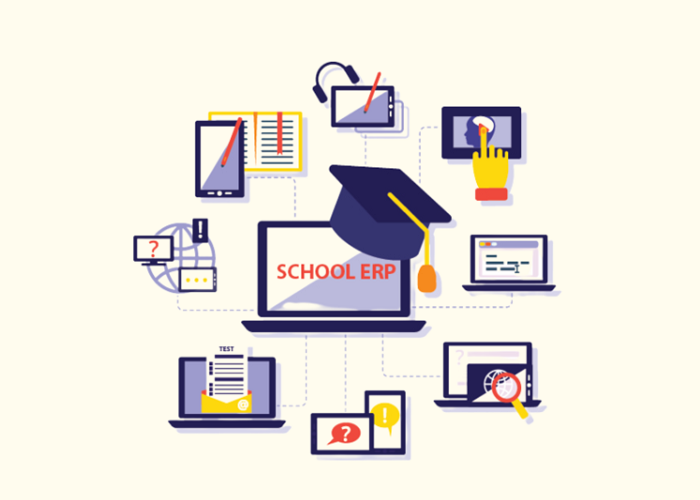Efficient data management is crucial for educational institutions to streamline operations and ensure smooth administrative processes. With the advancements in technology, implementing a comprehensive School ERP solution has become increasingly important. This article explores the benefits of using a School ERP system, specifically the best School ERP, in optimizing efficiency through centralized data management.
The Significance of Centralized Data Management:
Centralized data management plays a pivotal role in educational institutions by providing a unified platform for efficient storage, access, and management of data. It eliminates data silos, enhances data accuracy, and improves communication across various departments. Implementing a School ERP solution facilitates centralized data management and promotes operational efficiency.
Overview of School ERP Solution:
A School ERP solution is a comprehensive software designed specifically for educational institutions to manage and integrate various administrative processes. It offers modules and features that automate tasks such as student management, admissions, attendance tracking, timetabling, finance management, and more. The best School ERP solution combines robust functionalities, scalability, and customization options.
Centralized Student Data Management:
The best School ERP solution enables centralized student data management, including personal information, academic records, attendance history, and discipline records. It eliminates the need for multiple systems or spreadsheets, ensuring secure and easy access to student information. This streamlines data management, improves data accuracy, and enhances communication among stakeholders.
Streamlined Admissions Process:
With a School ERP solution, the admissions process becomes streamlined and efficient. Online application forms, automated workflows, and document management features simplify the entire admissions process. The system ensures transparency, facilitates seamless communication between applicants, administrators, and parents, and provides a smooth experience for all parties involved.
Efficient Attendance Tracking:
A School ERP solution automates attendance tracking, eliminating the need for manual attendance registers. It offers various attendance tracking options, such as biometric integration, barcode scanning, or online attendance marking. Real-time attendance updates, instant notifications, and comprehensive attendance reports enhance accuracy, reduce paperwork, and enable prompt communication with parents and stakeholders.
Streamlined Timetabling and Scheduling:
The best School ERP solution simplifies timetabling and scheduling processes, enabling administrators to create and manage class schedules efficiently. The system optimizes resource allocation, considers teacher availability, and resolves scheduling conflicts. It facilitates efficient timetabling, ensures smooth coordination among teachers and students, and minimizes disruptions.
Enhanced Data Security and Privacy:
A School ERP solution provides enhanced data security and privacy measures. It ensures that sensitive student information is protected through user authentication, role-based access controls, and data encryption. The system adheres to data protection regulations, instilling confidence among stakeholders regarding data security and privacy.
Conclusion:
Implementing a comprehensive School ERP solution, particularly the best School ERP, offers significant advantages in optimizing efficiency through centralized data management. By centralizing student data management, streamlining the admissions process, automating attendance tracking, facilitating efficient timetabling and scheduling, and ensuring enhanced data security, a School ERP solution enhances data accuracy, communication, and productivity. Investing in the best School ERP empowers educational institutions to streamline operations, improve data management, and create a cohesive and efficient administrative system. With a School ERP solution, educational institutions can enhance collaboration, improve decision-making, and optimize efficiency in all aspects of school management.
